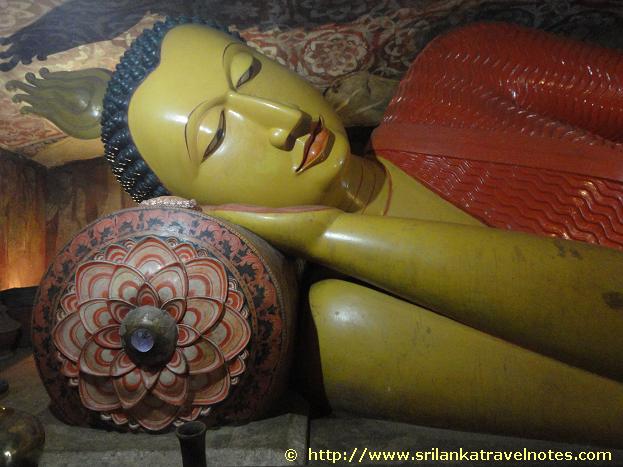Directory
Degaldoruwa Raja Maha Vihara
In the lovely valley of Lewella in the salubrious climes of Kandy are two temples recognized as treasure troves of central Kandyan art heritage. The two temples can be visited within a few minutes from each other.
Recently we were fortunate to visit the Degoldoruwa Viharaya and watch the restoration of its art work by the some young artists. This temple is snugly built into the base of a rock and according to the Degoldoruwa Sannasa, issued in 1786; the temple was commissioned by Kirthi Sri Rajasingha in 1771.
The rock cut chamber consists of two roofed antechambers in front, the first a drumming hall and the other an intermediate vestibule or mandapa. The white painted roman arch entrance is contrasting yet welcoming. A prominent bell fry stands alongside the temple building. Inside the temple is a large recumbent Buddha image. On the summit of the rock is the Bo tree and the Dagoba.
The Degaldoruva copper plate grant records the work carried on at the rock temple at Degoldoruwa thus:
“His highness Asthana , the younger brother of king Kirthi Sri at whose feet virtuous men performed services, as bees gather themselves around flowers, caused stone walls to be put up and doors and windows to be fit with keys and bars, and an image of Buddha of 12 cubits in length to be made in a reclining posture, and six other images of the Buddha in a sitting posture to be placed at the head and feet of the image and caused 24 Buddha images to be engraved in the ceiling and on the walls within and without, and other workmanship and engraving to be made thereon and upon the stone pillars, the roof of the front court to be put up with beams and rafters and covered with tiles and on the cross-walls …………..”
The paintings at Degaldoruwa are celebrated not only as some of the finest expressions of the central Kandyan School but also because they can be dated to a period between 1771 and 1786. Their well articulated and highly decorative line work, and brilliant red back grounds are some of the outstanding features. The renowned artist monk Devaragampola Silvatenne Unnanse remembered as the best painter of his day, is said to be responsible for the paintings still in existence.
Scholars point to the paintings found on the wall separating the vestibule from the inner chamber and on the natural rock ceiling itself. These paintings are divided into four panels. These consist of three Jataka stories the Sutasoma Jataka, the Vessanthara Jataka, and the Silava Jataka. The art works of the Vessanthara Jataka are considered as most outstanding in their expressiveness and in its narration. A quaint window is set to the left of the main door.
Directly on the other side of the same wall inside the inner chamber two side panels depict the Sat sati and the Solosmasthana, with Jataka stories in the centre.
The wall behind the principal, recumbent image has paintings of disciples, while the rock face immediately above the statue has a painted awning of large











